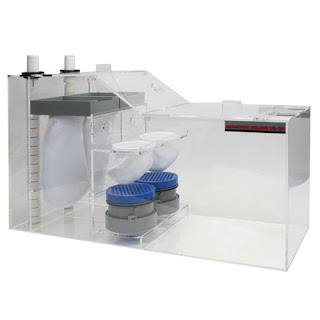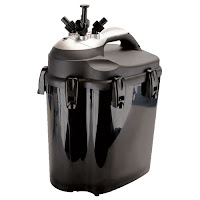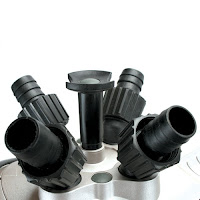With all of the recent ice storms that many of us have had the fun of experiencing this winter, I thought it would be a good time to discuss what to do when the power goes out and shuts off your aquarium.
There are a couple things that are going to become of immediate concern during a power outage; oxygen in the water; and temperature control. For short power outages, of up to an hour, you probably have nothing to worry about in most home aquariums. For longer power outages, several hours or more, you will need to keep a close eye on your aquarium, and action may be required.
The best time to think about power outages is before they happen, supplies will be limited or unavailable during a prolonged power outage, and you will probably have more important issues to deal with other than your aquarium.
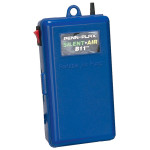 Especially in heavily stocked aquariums, oxygen levels in the water are going to be your primary concern. Fish, invertebrates, and bacteria all consume oxygen, and can quickly strip all available oxygen in your aquarium, especially at high temperatures. A Battery powered air pump is a relatively cheap insurance policy in the event of a prolonged power outage, air stones are the best way to provide oxygen and water movement. Basic units run on 2 “D” batteries and can power an air stone as long as you have batteries to put in it. There are a couple of more advanced battery backup pumps available also. The Penn Plax Silent Air B11 can detect power outages and come on automatically; it also runs on two “D” batteries. The OSI PAP 10C will operate as a normal air pump while the power is on, and then switch to its internal rechargeable battery when a power outage is detected. The units internal battery keeps itself charged under normal operation, then supplies up to 10 hours of battery life when the power goes out.
Especially in heavily stocked aquariums, oxygen levels in the water are going to be your primary concern. Fish, invertebrates, and bacteria all consume oxygen, and can quickly strip all available oxygen in your aquarium, especially at high temperatures. A Battery powered air pump is a relatively cheap insurance policy in the event of a prolonged power outage, air stones are the best way to provide oxygen and water movement. Basic units run on 2 “D” batteries and can power an air stone as long as you have batteries to put in it. There are a couple of more advanced battery backup pumps available also. The Penn Plax Silent Air B11 can detect power outages and come on automatically; it also runs on two “D” batteries. The OSI PAP 10C will operate as a normal air pump while the power is on, and then switch to its internal rechargeable battery when a power outage is detected. The units internal battery keeps itself charged under normal operation, then supplies up to 10 hours of battery life when the power goes out.
There are also a couple of products that can add oxygen to your aquarium chemically. Jungle Labs Bag Buddies and Tom Aquarium Products Oxygen stones are dissolving tablets that release oxygen into your aquarium. These products are designed for use in transporting livestock, but can also be used in emergency situations like power outages.
Temperature problems are more difficult to deal with, as without power you are at the mercy of the room temperature where the aquarium is located. Aquarium temperatures will not change rapidly, especially in large aquariums. If you are fortunate to live in a climate that does not have extreme heat or cold during the year then you are most likely going to be fine. If you live somewhere that extreme temperatures occur, then the next step is something that you may want to consider.
Using an electrical generator may be your best option if you live in a location that is prone to extended power outages, or extreme weather. You can get a small generator that can run your basic aquarium equipment, including your heater(S) for about $400 dollars at your local hardware store. The range of generators available can be mind boggling, you can get anything from a small portable unit, to a hardwired unit that can run your whole house indefinitely. Depending upon the investment that you have in your aquarium, a generator may or may not make sense. If you have a large reef tank, or exotic species of fish, the cost of a small generator may not be much when compared to the investment you have in your aquarium.
I hope this information has been helpful, and that the next ice storm is far away
Until next blog.
Dave
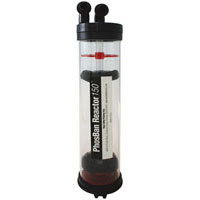 One of the most beneficial pieces of equipment to make its way into the hobby in recent years is the media reactor. Media reactors maximize the efficiency of just about any chemical filter media. By actively passing fluid through a reactor, you will eliminate clogging and bypass problems found when using a traditional filter media bags. Media reactors can have very specific uses, like the calcium reactors and kalkwasser reactors that I discussed in a previous blog, or they can be used for a variety of other purposes. Two similar reactors that are sold as fluidized phosphate media reactors, the Two Little Fishes Phosban Reactor, and the Kent Marine Phos Reactor, can be used with most granular or pelletized chemical media. These units are not just for phosphate remover; these units work great for carbon and other resins.
One of the most beneficial pieces of equipment to make its way into the hobby in recent years is the media reactor. Media reactors maximize the efficiency of just about any chemical filter media. By actively passing fluid through a reactor, you will eliminate clogging and bypass problems found when using a traditional filter media bags. Media reactors can have very specific uses, like the calcium reactors and kalkwasser reactors that I discussed in a previous blog, or they can be used for a variety of other purposes. Two similar reactors that are sold as fluidized phosphate media reactors, the Two Little Fishes Phosban Reactor, and the Kent Marine Phos Reactor, can be used with most granular or pelletized chemical media. These units are not just for phosphate remover; these units work great for carbon and other resins.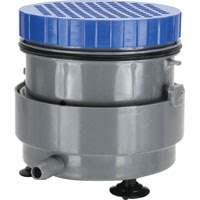 One of the coolest reactors to hit the market is the new Simplicity Fluidized Bed Chemical Reactor from Magnavore. This unit is designed for use in a sump, and is very easy to install and operate. Micron sieves on either side of the reactor make sure that nothing escapes from the reactor, and the media container is reversible to eliminate clogging problems before your media is exhausted.
One of the coolest reactors to hit the market is the new Simplicity Fluidized Bed Chemical Reactor from Magnavore. This unit is designed for use in a sump, and is very easy to install and operate. Micron sieves on either side of the reactor make sure that nothing escapes from the reactor, and the media container is reversible to eliminate clogging problems before your media is exhausted. That Fish Blog – Aquarium Advice and Information
That Fish Blog – Aquarium Advice and Information

